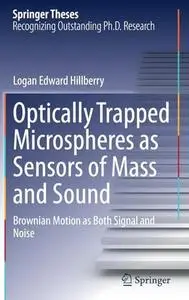Optically Trapped Microspheres as Sensors of Mass and Sound: Brownian Motion as Both Signal and Noise by Logan Edward Hillberry
English | PDF EPUB (True) | 2023 | 124 Pages | ISBN : 3031443314 | 23.3 MB
This thesis makes significant advances in the use of microspheres in optical traps as highly precise sensing platforms. While optically trapped microspheres have recently proven their dominance in aqueous and vacuum environments, achieving state-of-the-art measurements of miniscule forces and torques, their sensitivity to perturbations in air has remained relatively unexplored. This thesis shows that, by uniquely operating in air and measuring its thermally-fluctuating instantaneous velocity, an optically trapped microsphere is an ultra-sensitive probe of both mass and sound. The mass of the microsphere is determined with similar accuracy to competitive methods but in a fraction of the measurement time and all while maintaining thermal equilibrium, unlike alternative methods. As an acoustic transducer, the air-based microsphere is uniquely sensitive to the velocity of sound, as opposed to the pressure measured by a traditional microphone.



